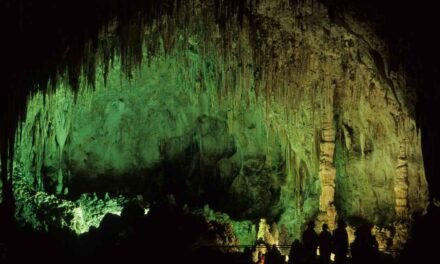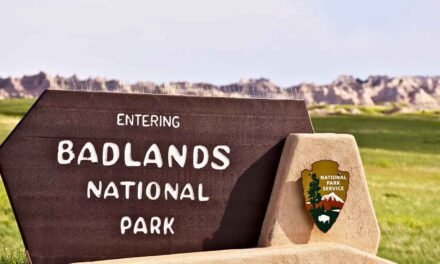As the largest national park in the United States, Wrangell-St. Elias National Park and Preserve boasts a breathtaking landscape that includes towering mountains, vast glaciers, and wild rivers. Spanning over 13.2 million acres, this vast park is famous for its unique geology, diverse ecosystems, and rich cultural history. In this comprehensive guide, we’ll explore everything you need to know to plan your perfect trip to Wrangell-St. Elias National Park.
Wrangell-St. Elias National Park Location
Located in southeastern Alaska, Wrangell-St. Elias National Park and Preserve borders Canada’s Kluane National Park and Reserve, and together with Glacier Bay National Park and Tatshenshini-Alsek Provincial Park, they form a UNESCO World Heritage Site. The park is approximately 200 miles east of Anchorage and 250 miles south of Fairbanks, making it accessible by car, plane, or bus. Despite its remote location, the park’s stunning landscapes and diverse activities make it well worth the journey.
Wrangell-St. Elias National Park Things to Do
There’s no shortage of activities to enjoy in Wrangell-St. Elias National Park, with options suitable for all ages and interests. Some popular things to do include:
Whether you’re a seasoned adventurer or a casual visitor, Wrangell-St. Elias offers unforgettable experiences for everyone.
Wrangell-St. Elias National Park Itineraries
The vastness of Wrangell-St. Elias National Park means there are numerous itineraries to choose from, depending on your interests, time, and physical abilities. Here are some suggested itineraries to help you plan your visit:
1-2 Day Itinerary
3-5 Day Itinerary
Extended Itinerary (1 week or more)
Best Season to Visit Wrangell-St. Elias National Park
The best time to visit Wrangell-St. Elias National Park depends on your interests and preferred activities. The peak season for the park is from June to August when the weather is typically warmer and drier. This is the ideal time for hiking, backpacking, fishing, and wildlife viewing. However, keep in mind that this is also the busiest time of year, so expect more visitors and limited availability for accommodations and guided tours.
For winter enthusiasts, the park offers skiing, snowshoeing, and snowmobiling opportunities from December to March. However, be prepared for extreme cold, limited daylight hours, and unpredictable weather conditions. Some park facilities and services may also be closed or limited during the winter months.
If you’re looking for a quieter experience, consider visiting during the shoulder seasons of May and September. While the weather may be less predictable, you’ll have a better chance of enjoying the park’s beauty without the crowds.
Wrangell-St. Elias National Park Weather
Weather in Wrangell-St. Elias National Park can be highly variable, with temperatures and conditions changing rapidly throughout the day. In general, summers are mild, with daytime temperatures ranging from 50°F to 70°F (10°C to 21°C), while nights can be cool, dipping into the 30s and 40s°F (0-10°C). Rain is common in the summer months, so be prepared for wet conditions.
Winter temperatures can drop well below 0°F (-18°C) with heavy snowfall, especially in the park’s higher elevations. Spring and fall can be unpredictable, with a mix of rain, snow, and varying temperatures.
It’s essential to pack appropriate clothing, including layers, waterproof gear, and warm clothes, to adapt to the changing conditions during your visit.
Wrangell-St. Elias National Park Hotels and Camping
While there are no hotels within Wrangell-St. Elias National Park, there are a variety of accommodations available in the surrounding communities, such as Copper Center, Glennallen, McCarthy, and Kennecott. Options range from lodges and bed & breakfasts to cabins and vacation rentals.
For those who prefer camping, there are two established campgrounds within the park:
Backcountry camping is also allowed throughout the park, but be sure to follow Leave No Trace principles and obtain any necessary permits.
Wrangell-St. Elias National Park Restaurants
Dining options within Wrangell-St. Elias National Park are limited, so it’s essential to plan ahead and bring food, water, and cooking supplies with you. There are a few restaurants, cafes, and bars in the nearby towns of McCarthy and Kennecott, offering casual dining options and local cuisine.
Wrangell-St. Elias National Park Wildlife and Plants
The diverse ecosystems within Wrangell-St. Elias National Park support a wide variety of plant and animal species. Wildlife enthusiasts may have the opportunity to spot Dall sheep, moose, caribou, mountain goats, black and brown bears, wolves, and various smaller mammals. The park is also home to numerous bird species, including eagles, hawks, owls, and migratory songbirds.
Plant life in the park ranges from lush forests to alpine tundra, with a diverse array of wildflowers, mosses, lichens, and fungi. The park’s lower elevations feature spruce and hemlock forests, while higher elevations are characterized by alpine meadows and tundra.
Wrangell-St. Elias National Park History
The history of Wrangell-St. Elias National Park is rich and complex, with a long history of human habitation by the Ahtna and Eyak peoples. Their deep connection to the land is evident in archaeological sites, oral histories, and traditional place names throughout the park.
The park also has a fascinating history of exploration, mining, and mountaineering. During the late 19th and early 20th centuries, prospectors flocked to the area in search of copper and other valuable minerals. The Kennecott Mines, now a National Historic Landmark, stand as a testament to this era of Alaska’s history.
The park was established in 1980 by the Alaska National Interest Lands Conservation Act (ANILCA), which sought to protect its unique ecosystems and cultural heritage. Today, the park continues to serve as an essential refuge for wildlife and a living link to the area’s past.
Wrangell-St. Elias National Park Geology
The geology of Wrangell-St. Elias National Park is incredibly diverse and fascinating. The park is part of the larger Wrangell-St. Elias Mountain Range, which includes some of the highest peaks in North America. The range is part of the Pacific Ring of Fire, a geologically active region that includes several active volcanoes, such as Mount Wrangell.
Glaciers are another prominent feature of the park’s landscape, with some of the largest and longest glaciers in the world found within its boundaries. The Bagley Icefield, Malaspina Glacier, and Hubbard Glacier are just a few examples of the park’s stunning ice formations.
The park’s geologic diversity has also led to the formation of unique ecosystems and habitats, supporting a wide variety of plant and animal life.
Conclusion
Wrangell-St. Elias National Park and Preserve offers a one-of-a-kind experience for visitors, with its breathtaking landscapes, rich cultural history, and diverse recreational opportunities. This comprehensive guide should help you plan your visit, whether you’re seeking adventure, relaxation, or a deeper connection to the natural world. From hiking and wildlife viewing to exploring historic sites and taking in the awe-inspiring scenery, Wrangell-St. Elias is sure to leave a lasting impression on all who visit.





